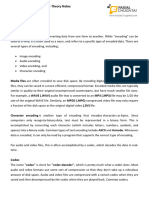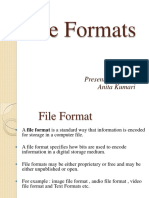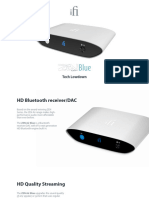0% found this document useful (0 votes)
62 views2 pagesCodec
A codec is a hardware or software application that compresses and decompresses media files to save storage space and facilitate media playback and transmission. The term 'codec' combines 'coder' and 'decoder', and there are various codecs for audio, video, and still images, with common examples including MP3, H.264, and H.265. AVI is a container format that can use multiple codecs, and H.265 offers better compression efficiency and supports 8K resolution compared to its predecessor H.264.
Uploaded by
VenkatCopyright
© © All Rights Reserved
We take content rights seriously. If you suspect this is your content, claim it here.
Available Formats
Download as PDF, TXT or read online on Scribd
0% found this document useful (0 votes)
62 views2 pagesCodec
A codec is a hardware or software application that compresses and decompresses media files to save storage space and facilitate media playback and transmission. The term 'codec' combines 'coder' and 'decoder', and there are various codecs for audio, video, and still images, with common examples including MP3, H.264, and H.265. AVI is a container format that can use multiple codecs, and H.265 offers better compression efficiency and supports 8K resolution compared to its predecessor H.264.
Uploaded by
VenkatCopyright
© © All Rights Reserved
We take content rights seriously. If you suspect this is your content, claim it here.
Available Formats
Download as PDF, TXT or read online on Scribd
/ 2





















































































